The Weather: As BA5 has become the dominant new strain, we have been at a sustained surge for many weeks now. The transmission map shows that 99% of people in the US are still at high or substantial transmission.

Relentless high transmission levels are the result of removing all public health protections. Vaccines are important for preventing severe disease but are not enough to keep cases low in our communities.
Watch the spread here:
On Variants: BA4/5 are now the dominant virus in the US, at an estimated 70% of cases – with almost half of all cases being BA5. BA2.12, which had been spreading rapidly, has mostly been replaced with these newer, more immune-evasive variants.
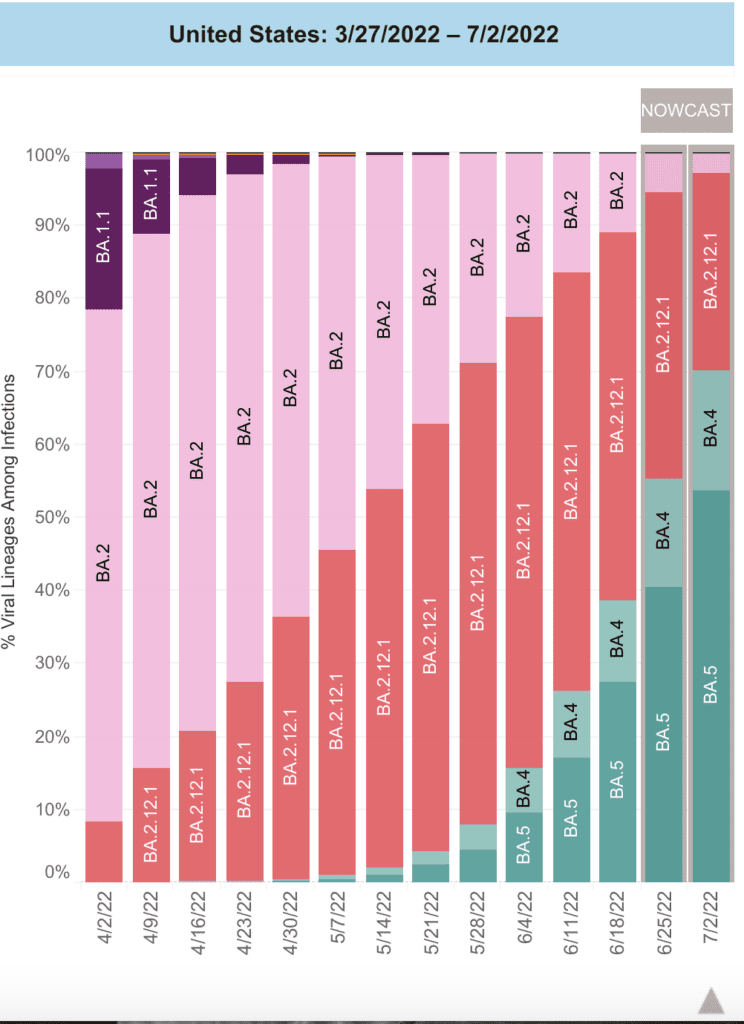
BA5 now makes up at least half of cases in every region except the Northeast, which just had a BA2.12 surge – and BA5 is expected to become the most common variant in the Northeast soon, which suggests little protection from previous surges this year.
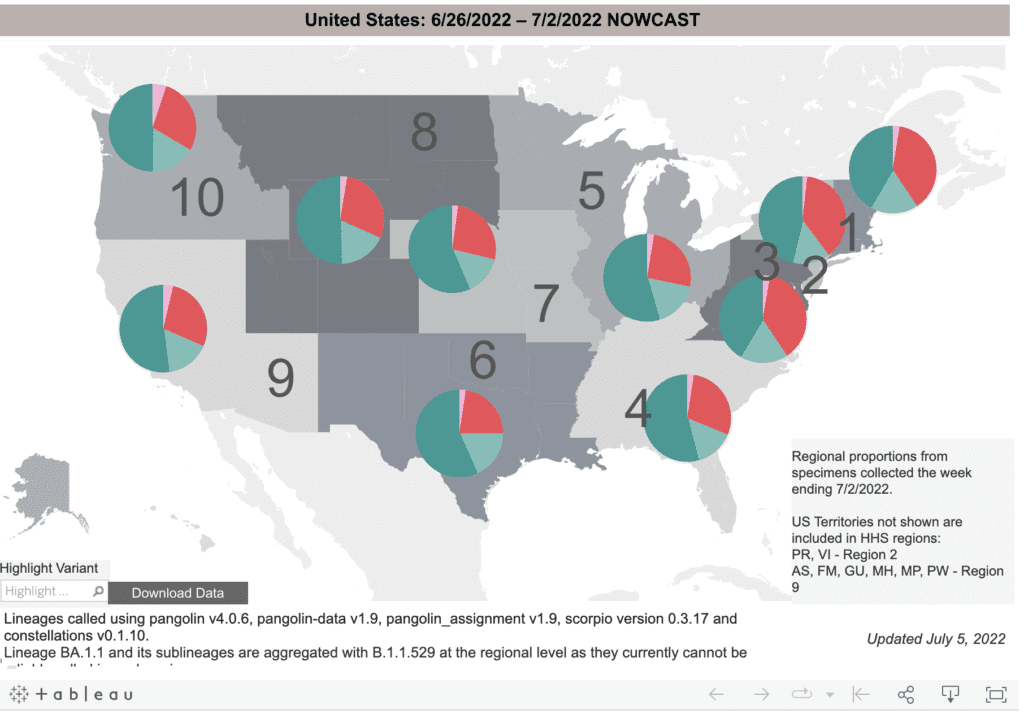
Wastewater Monitoring: National wastewater data from @BiobotAnalytics shows that the high plateau we reported last week is continuing and even starting to rise again. Our current levels match the peak levels of 2020 & 2021, yet we have far fewer protections in place.
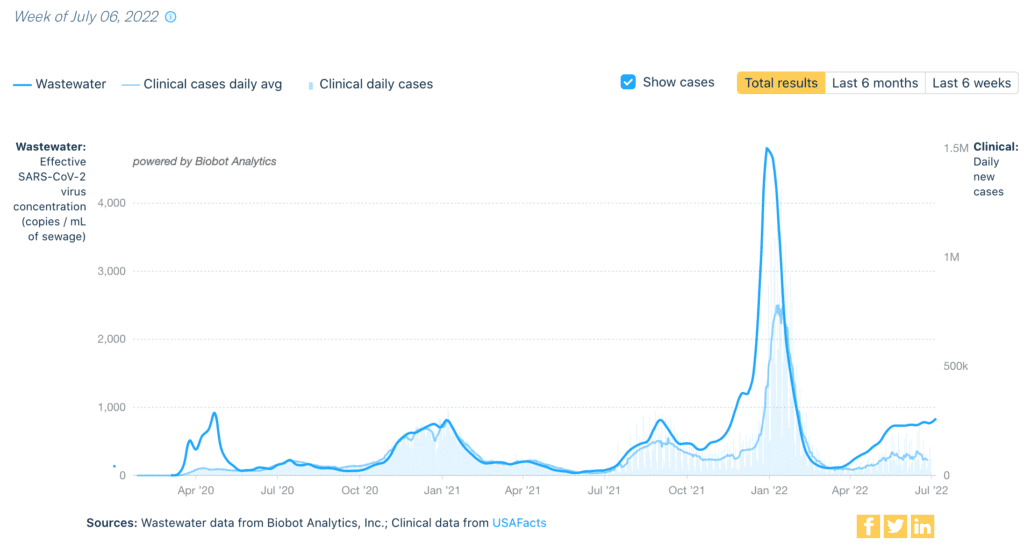
Regionally, we see all areas are flat or increasing, except for a slight decline in the West. All regions (except the South) are also at levels higher than the Delta wave of last fall.

Hospitalizations: For 11 weeks in a row, hospitalizations have been rising nationally. After a brief dip in the Northeast, rates are rising again – showing little protection against BA5 from the previous surges. All regions are now seeing increased hospitalizations.
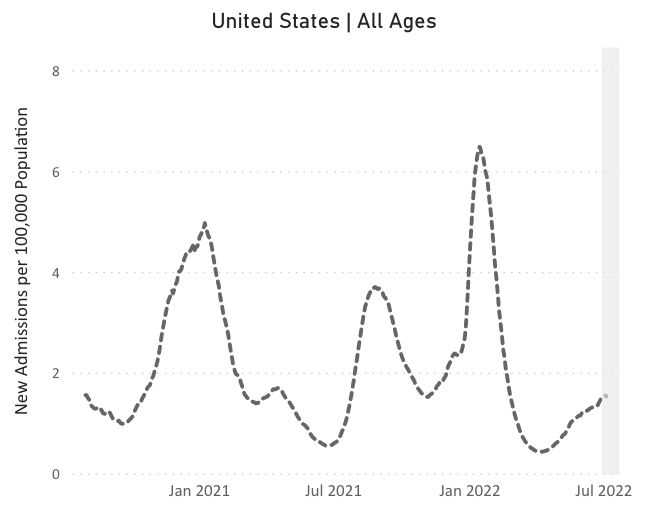
Deaths: In the past week, from June 30 to July 6, 1,949 people died of COVID nationally.
Be Prepared: New research shows folks with 3 doses of vaccine are 90% less likely to experience severe disease compared to those with no doses, even against Omicron BA1 & BA2. People with 3 doses were at least 50% less likely to have symptomatic infection than those with 0 doses.
Yet booster rates are still low in the US – only 106 million people have had a booster. Consider a 2nd booster if you are over 50 or immunocompromised. We are still urgently waiting for updated vaccines made for Omicron variants.
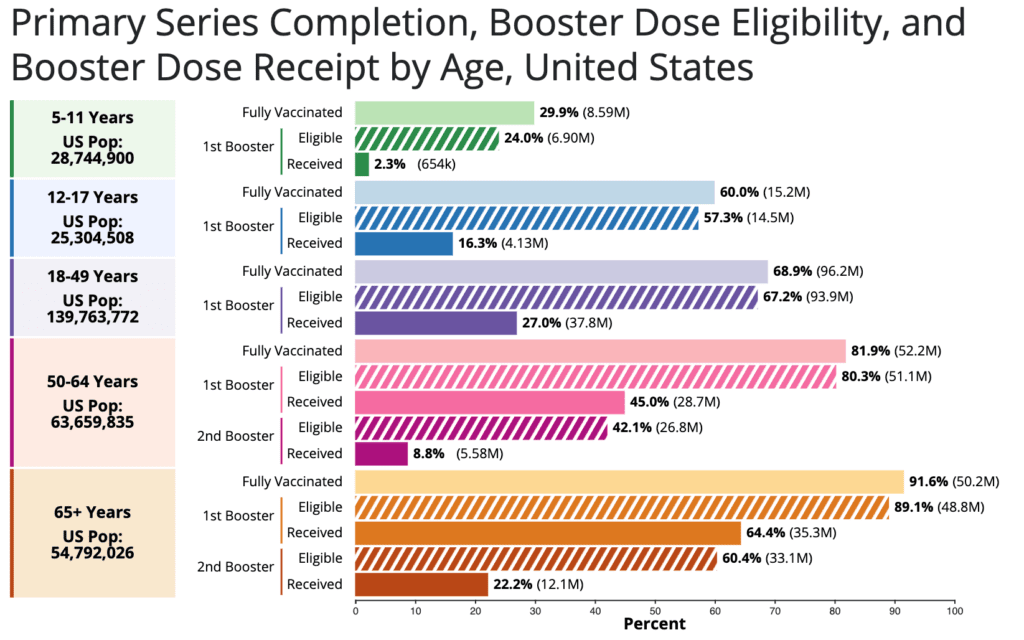
COVID can be particularly dangerous for pregnant people & their babies. However, research shows that not only are vaccines safe, they helped prevent bad birth outcomes! Vaccinated patients were less likely to have preterm or stillbirths.
Scientists are keeping an eye on the new COVID variant BA.2.75. The new variant has a considerable number of mutations — nine — on its spike protein and has spread to at least eight countries.
Forecast: With high transmission rates & few protections in place, COVID continues to cause avoidable death & sickness. We must organize & pressure leaders for free high quality masks & tests, improved ventilation, paid sick leave, unemployment supports, & universal health care.
On monkeypox: We continue to have a minimal response with little data to guide us. As of July 8th, there are nearly 800 confirmed cases – but comprehensive protections such as testing, tracing, & isolation, as well as vaccinations, are urgently needed.
On Long COVID: A recent study shows that the immune response to COVID can cause inflammation and damage in the brain. This may explain some symptoms, such as brain fog, often reported by Long COVID patients and gives researchers targets for LC treatments.
Sources – Check out the links throughout and see our website for more! https://bej.gbh.mybluehost.me